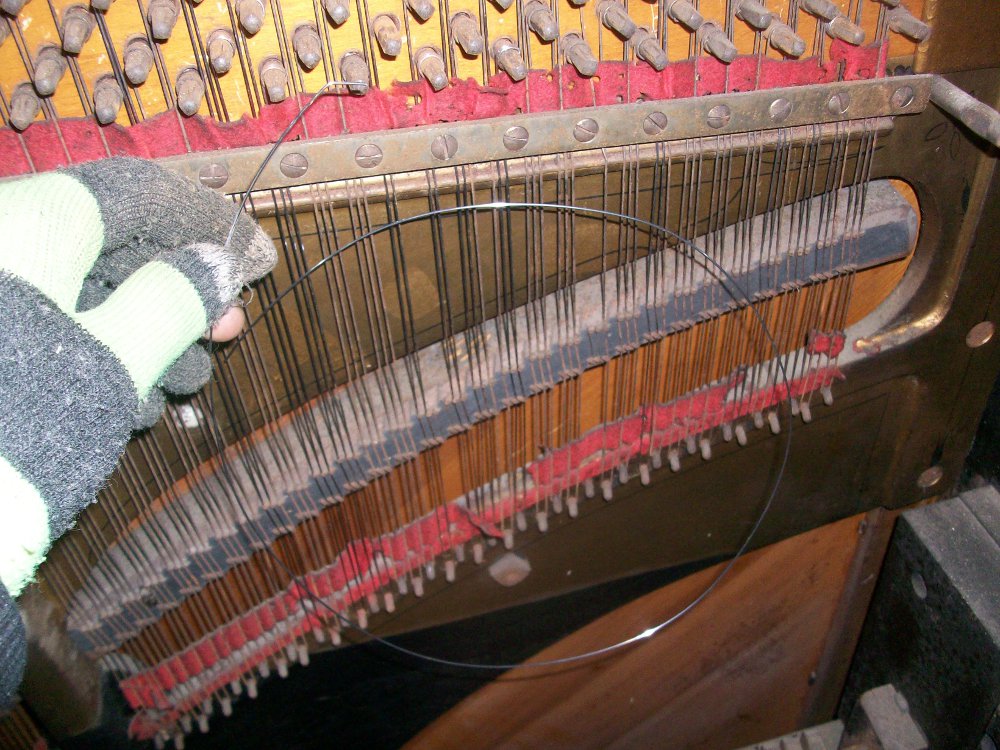In about one in a hundred piano tuning jobs, the piano technician is faced with a rusty or worn-out string which snaps as the tuning pin is tightened. When faced with this problem, we have a few options…

If it is on the bass, the customer will be charged for a new string which is hand spun by a professional and sent back to me within ten days. I then charge the price of the new string (which is usually in around £20 – £25 depending on its thickness and amount of copper required) plus £20 labour to fit the string. There are no specialists in Leeds or Yorkshire that I know of, so the string has to be sent to Bath in order to be remade.
There are three different types of strings on the piano: monochord, bichord and trichord. The lower middle and bass section of the piano consists of copper wound monochord and bichord strings (the hammers hit either one or two strings in this section), which have more length and thickness than the upper two thirds of the piano. In the treble section of the piano we find trichord strings at which each hammer hits three strings, creating a richer sound. The farther up the piano you go, the shorter the strings are as obviously the shorter the string the higher the frequency. One of the most important skills that a piano tuner needs to master is tuning the bichord and trichord strings so that they are exactly the same pitch (we call these the unisons). If they are even slightly out of tune with each other it creates a horrible chorusy sound, which ruins the tone of that particular note.
When I pack my car to each morning before driving into Leeds, I have a box of different sized piano strings, which I keep as back ups for emergencies. I have a selection of hexacore bass strings which can be used as a temporary fix, but the pitch and intonation of a piano string never sounds quite right unless the string is exactly the right size. If the diameter of the new string is even a few millimetres off, it can give that particular note a nasal or thin quality, so this is usually done only for emergencies until the replacement string has arrived. For the trichord strings I have lots of different sized plain wire which can be measured with a micrometer and fitted after the piano tuning.
It is rare that every string on a piano would need to be replaced, but in a full restoration job it could be worth it if the piano is of a sufficiently high quality. Seeing as there are 230 strings on an average-sized piano, the cost of labour and materials is usually upwards of a thousand pounds, but there are some very old pianos that have benefited from this as part of a full restoration – and have greatly increased their value in the process.
As always, call your local piano repair man (hopefully me) – don’t try and do it yourself! Piano tuners go to college for three years, this isn’t a job for an amateur!
